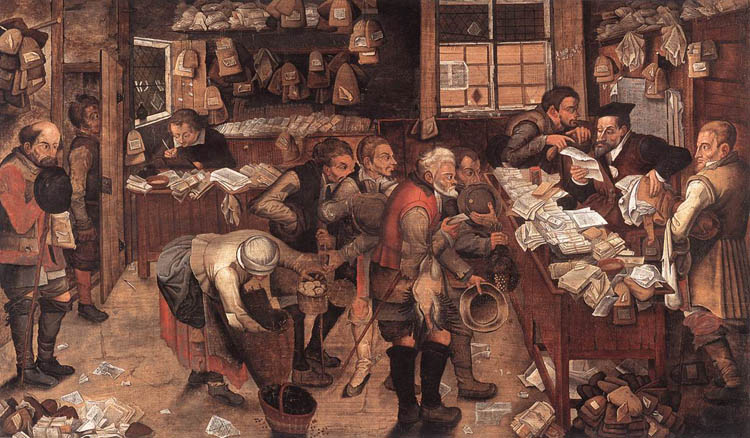
January 23, 2015, by Harry Cocks
Women and the Law in 14th-Century England
In November 1394 Robert Polidod and his wife Margery, both of Nottingham, complained in the city’s borough court that Richard Hawkburn and his wife Alice owed them 22d for ale and a cash loan. Though Richard and Alice denied owing the money, an inquisition jury was summoned and reported that they did. The couple were fined 3d. and ordered to pay 2d. damages to Robert and Margery, along with repaying the debt. Two years later Robert Ostiler and William Boteler, butcher, Decennaries of Midilpament, (Middle Pavement) presented an affray made without blood against Joan, wife of Hugh Wymondslow, upon Thomas Benton, barber, because the aforesaid Joan came into the Common Hall, and there spoke malicious words to the aforesaid Thomas, and there slapped his face, against the peace of our Lord the King, etc. And hereupon, the court recorded, the said Joan comes, and places herself (pleads guilty) upon the favour of the Mayor. She was fined 12d.
In a new Ph.D thesis from Nottingham’s History Department, “Urban women and local justice: gender, society and litigation in fourteenth-century England,” Dr Teresa Phipps uses records like these from the town courts of Nottingham, Chester and Winchester to explore and compare the role played by women and men in the legal proceedings of the period. These records reveal the everyday social and economic relationships that existed in towns, and the different roles played by men and women when their social and economic roles deviated from the acceptable norms of behaviour. While often hidden from view in other medieval sources, Dr Phipps says, women were active litigants in the 14th-cenury borough courts. Dr Phipps also shows that women played a key role in local justice and demonstrates the centrality of local custom to the determination of female legal status in a variety of situations.
These courts were the key legal forum that ordinary urban residents used on a regular basis and their records allow access to the most common legal experiences, making their examination crucial to medieval urban social and economic history. Dr Phipps’ research therefore deals with complaints concerning local debts and detained goods, assaults and theft, as well as trading regulations and public nuisances. Together these offences and complaints provide a colourful picture of medieval urban life, as well as revealing the different legal status of individuals in relation to these various actions. Dr Phipps’ work also shows patterns across the English urban system, demonstrating the importance of locality in legal practice and the way in which common law conventions and doctrines, particularly coverture (the doctrine that wives could only be legally represented by their husbands), were interpreted differently in local and specific contexts. It also considers other factors that influenced women’s experiences of justice, such as the specific nature of a dispute, individual social status and reputation.
illustration top right: Peter Breughel the Younger, The Lawyer (c. 1621)
No comments yet, fill out a comment to be the first

Leave a Reply